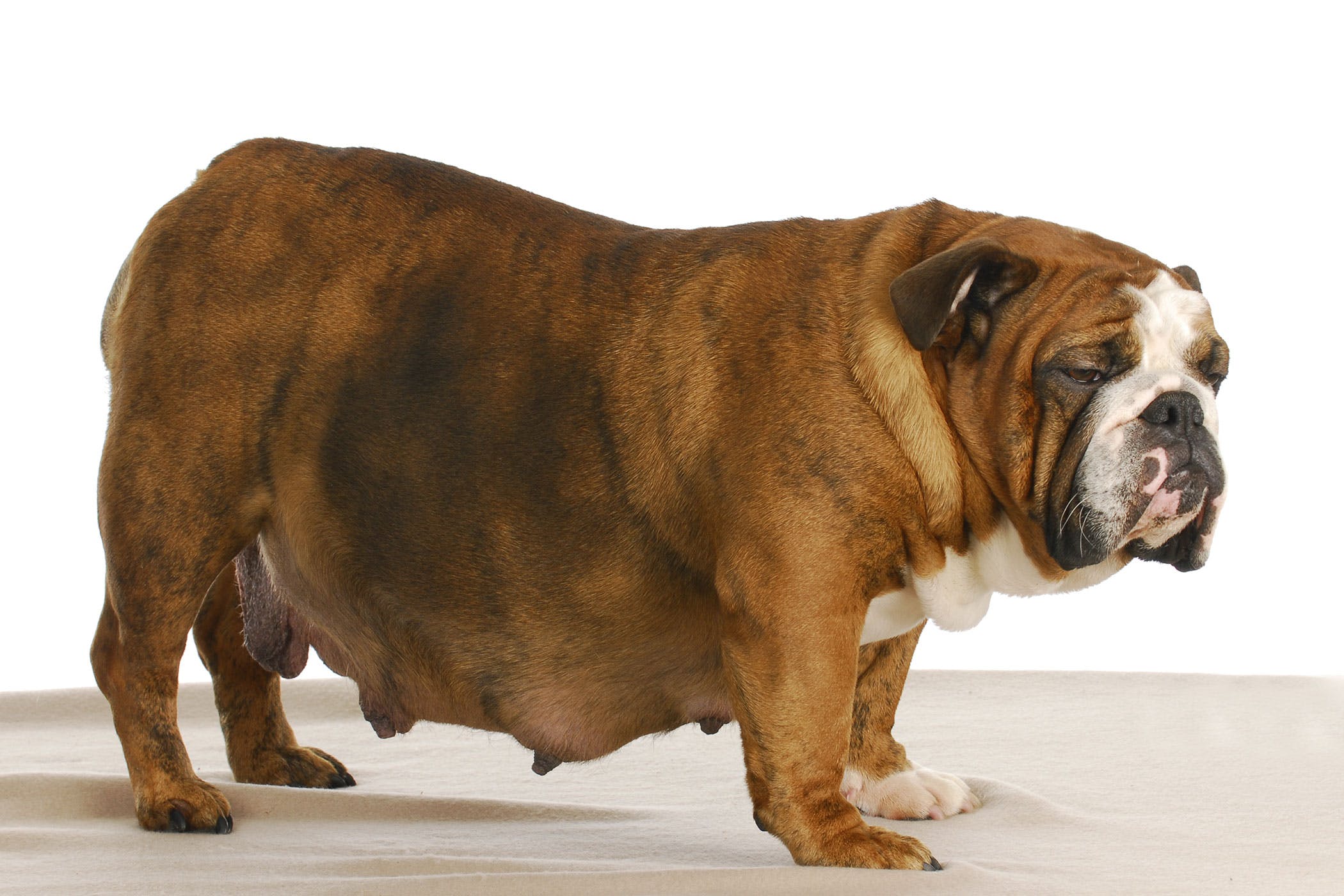My Dog Accidentally Got Pregnant On Her First Heat: What Should I Do?

If you’re a dog owner, you’ve probably faced a few unexpected situations. Maybe your dog ate chocolate and you panicked for a bit, or she slipped out the door for a wild adventure, or, worse yet, she got pregnant on her first heat. Now, none of these things make you a bad dog parent, but it’s important to know that some situations can put her health or life at risk, and that’s where caution comes in.
When a dog gets pregnant during her first heat, it’s a big deal. Physically and mentally, she’s just not ready to handle a pregnancy yet. Her body’s still growing, and her mind’s not quite mature enough to handle the responsibility of carrying and caring for pups. Add to that the higher chances of complications – early pregnancies come with all sorts of risks. On top of that, if the pregnancy’s an accident, there’s also the possibility of the pups inheriting genetic disorders.
Now, if you’re reading this and thinking, “Oh no, my dog might be pregnant!” don’t panic. First things first: confirm whether she’s actually pregnant. Once you’re sure, it’s time to talk to your vet about your options. Should you continue with the pregnancy or consider an abortion? It’s a tough call, but it’s one you shouldn’t make alone.
In this post, we’ll dive deeper into why it’s problematic for dogs to get pregnant on their first heat, what happens when an accident occurs, and what steps you can take to help your dog through her pregnancy (if that’s the path you choose). Let’s break it all down and get you the info you need to make the best decision for your furry friend.
Read Also: My 9 Month Old Dog Got Pregnant: Is She Too Young?
Jump to Section
Is It Bad If Your Dog Gets Pregnant Their First Heat? Is She Too Young?
Okay, let’s talk about breeding a dog during her first heat. Here’s the deal: while the first heat shows that your dog is now sexually mature, it’s not the best time to be thinking about puppies. Seriously, it can be super stressful and even dangerous for your dog if she gets pregnant on her first heat. Experts all agree that it’s way better to wait until her third heat before considering breeding. That’s when she’s more physically and emotionally ready, and the risks are lower.
Why? Well, when a dog gets pregnant during her first heat, she’s still growing herself. She’s not at the right size to carry a litter, and she might not even be mature enough to care for those puppies properly. From mating to delivery and nursing, the whole process is tough on her body, and it can cause serious stress, not to mention health risks.
Most first-heat pregnancies are accidental, and that’s why it’s super important to take steps to avoid it. Keep your female dog away from male dogs. They’re always ready to mate, unlike the females who only go into heat a couple of times a year. And if you’re not planning on breeding, doggie diapers are a simple way to prevent any “oops” moments.
Trust me, when you hold off until your dog is fully ready, everyone – including your dog – will be better off.
Read Also: What Happens If You Pull Dogs Apart When Mating? (Explained!)
What Happens If My Dog Accidentally Gets Pregnant On Her First Heat?
Let’s break down the possible problems or outcomes that can result if your dog gets pregnant on her first heat.
1. Physical Stress
If a dog gets pregnant during her first heat, she’s not ready for the stress of carrying and caring for a litter. Her body isn’t fully developed, so the strain of pregnancy and nursing can be a real challenge.
This stress can even affect the puppies, as high cortisol levels can pass through the placenta. And if a small dog accidentally mates with a larger one, it can be dangerous, even putting her life at risk. Even if she’s physically mature, the size difference can make everything way harder. Bottom line: first-heat pregnancies are risky for both mom and pups.
2. Mental Confusion And Lack Of Maternal Instincts
Pregnancy brings big hormonal changes, which can make dogs more irritable. For young, underdeveloped dogs, this can be even worse, leading to more frustration and mood swings.
Having a litter too early is overwhelming for many dogs. They often don’t know how to adjust and can lack the maternal instincts needed to care for their puppies. This happens because they don’t produce enough oxytocin, the hormone responsible for bonding and nurturing, since they’re still growing themselves.
In fact, maternal neglect is a major factor in puppy mortality, according to studies.
3. Genetic Issues Can Be Passed To Offspring
When a dog is young, she might have genetic issues that aren’t obvious yet, but they can still be passed on to her puppies. Breeding during her first heat increases the chances of passing on genetic disorders.
And if the pregnancy is accidental, there’s no health screening to catch potential problems. So, it’s basically a gamble – there’s no way to know if the parents have genetic issues that could affect the puppies.
4. The Litter May Have Weaker Immunity
Immunity comes in two types: innate and adaptive. Adaptive immunity includes both passive (maternal) immunity and active immunity. Since puppies aren’t born with fully developed immune systems, they rely on maternal immunity early on.
Mom passes antibodies to her puppies through the placenta and breast milk. The first milk, called colostrum, is packed with antibodies to help protect them.
As dogs grow, they develop active immunity by being exposed to infections. But younger dogs with fewer exposures often have weaker immune systems, so their maternal antibodies may not be enough to protect their puppies, leaving them more vulnerable to infections.
5. Higher Risks Of Complications From Pregnancy And Delivery
Pregnancies during a dog’s first heat come with higher risks that can endanger both the mother and her puppies. Complications like spontaneous abortions, stillbirths, and congenital abnormalities are more common in these high-risk pregnancies.
Young dogs may also struggle with delivery because their bodies aren’t fully developed. This becomes even more dangerous if a small breed mates with a medium or larger dog. In some cases, abortion is the only safe option.
6. Puppy Size And Health Can Be Affected
Young mom dogs often give birth to small, underweight puppies because their bodies aren’t big enough for the puppies to fully grow. These immature dogs also tend to go into labor earlier, leading to preterm puppies.
On top of having weaker immune systems, puppies from young dams are more likely to face health issues that can affect their overall well-being.
7. A Litter With Undesirable Features Can Be Produced
Most first-heat pregnancies happen by accident, not through careful, selective breeding where the best traits are chosen for the litter.
When a dog gets pregnant unintentionally, you don’t get to choose the parents to shape the puppies’ appearance or personality. This often leads to puppies being abandoned, which only adds to the number of strays and crowded shelters.
What Should I Do If My Dog Accidentally Gets Pregnant On Her First Heat?
Spaying, keeping female dogs in heat isolated, and using doggie diapers are great ways to prevent accidental pregnancies. But if your dog is already pregnant, it’s too late for prevention. At this point, your main focus is ensuring her safety and health, so it’s crucial to take action right away.
1. Visit Your Vet For Pregnancy Test
You might notice signs of pregnancy in your dog, like a swollen belly, enlarged breasts, lethargy, weight gain, and irritability, but you’ll still need a pregnancy test to be sure and rule out a false pregnancy.
False pregnancies show the same physical and behavioral changes as real pregnancies, so it’s crucial to confirm with a proper test. There are a few ways to check, like abdominal palpation, hormonal tests, ultrasounds, and X-rays.
Abdominal palpation is the least accurate method – it’s just feeling the dog’s belly to check for swellings. To tell if it’s a true pregnancy, a hormonal blood test or ultrasound is needed. The blood test checks for a hormone called relaxin, but it can take up to 28 days after conception to show results. Neither palpation nor the hormonal test can confirm if the puppies are viable.
Ultrasound, on the other hand, not only detects the pregnancy but also checks if the puppies are healthy and developing well.
2. Seek Medical Advice From A Professional
After a pregnancy test, your vet will discuss the results and likely explain the risks of an early pregnancy for your dog.
In most first-heat pregnancies, abortion is recommended because the young dog might not be able to carry a healthy litter. Without abortion, the risk of miscarriage and stillbirth increases. If the dog was bred with a much larger male, complications during delivery can arise, especially if the birth canal is too small.
Ultimately, it’s up to the vet to monitor the pregnancy and guide you on the safest course of action for your dog.
3. Planned Abortion
Planned abortion in dogs is the intentional termination of a pregnancy, typically done by a qualified veterinarian. Dogs may undergo abortion for various reasons, like mismatched breeding, old age, or to prevent overpopulation. If a dog becomes pregnant during her first heat cycle, abortion might be necessary.
There are different methods for terminating a pregnancy, and it’s best to consult your vet to determine which one is right for your dog. The most effective method is ovariohysterectomy, a surgery where the uterus and ovaries are removed – perfect if you’re not planning future pregnancies.
Other options include oral or injectable estrogen, but these can have side effects like pyometra or bone marrow issues. A safer choice is the prostaglandin injection, which has mild side effects. Dexamethasone can also terminate pregnancies, though it comes with side effects like diarrhea, nausea, and increased thirst and urination. Always consult your vet to ensure the safest option.
Final Thoughts
Most dog owners and breeders know better than to breed dogs during their first heat, but accidents still happen because, well, dogs are naturally curious creatures.
To protect your dog’s health and safety, it’s crucial to prevent early pregnancies. If it does happen, take action immediately. Plus, accidental pregnancies often don’t result in healthy puppies, and many end up in shelters or as strays.
The best way to avoid this problem? Spaying your female dog. Other options like isolation and diapers can help, but it’s always better to be safe than sorry – after all, you never know when your dog might meet an unplanned mate.
Read Also: 2 Year Old Dog Never Been In Heat (6 Possible Reasons)
Read related posts about





